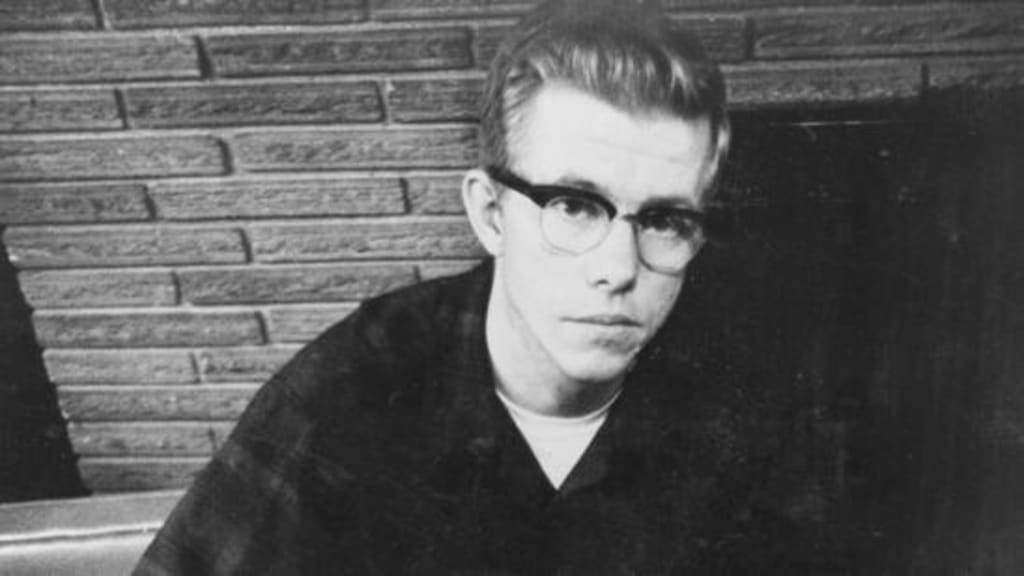
The idea of hunting humans has capitative the minds of people everywhere, possibly starting with the short story written by Richard Connell named The Most Dangerous Game. In the short story, it describes the story of a wealthy Russian aristocrat that was bored of trapping animals, so he instead lures a big-game hunter to his island and hunts him.
Hunting humans has been relegated to the pages, at least for the most part.
In the 1970's, Robert Hansen, otherwise known as "Butcher Baker," turned this into reality, a decade-long reality. Robert managed to maintain a wholesome reputation in his town, but he let his sinister side run rampant in the woods of Alaska.
Robert targeted sex workers and exotic dancers throughout the 70's and 80's, he would abduct them and let them loose in the woods where he would then hunt them like animals.
Who Was Robert Hansen?
Born on February 15th, 1939 in Estherville, Iowa, Robert Christian Hansen's father was a Danish immigrant who was an owner of a bakery. He also happened to be a strict disciplinarian.
Robert's childhood wasn't easy, he would work long hours in his father's bakery from a young age. He was also born left-handed, but he was instead forced to use his right-hand, this switch resulted in him suffering from a lifelong stutter.
He was painfully shy as a teenager, he suffered with bad acne, and was mocked for his stutter. Boys at school would make fun of him and the girls that he had crushes on rejected him. He was described as a loner.
He was a social outcast, he would spend time alone to get away from it all. And over time, he became an avid game hunter, he would channel his rage and fantasies of vengeance into the sport of stalking these animals.
His Need for Revenge
When Robert was 18-years-old, Robert joined the United States Army Reserve, he was hoping that this would allow him to leave his troubles behind and he could make something of himself.
And for a while, he did just that. After serving a year in the reserves, he ended up as an assistant drill instructor in Pocahontas, Iowa, and he married a young woman that he met during his time there.
But, Robert was feeling mistreated by the community still, so he sought out retaliation. In 1960, when he was 21, he managed to convince a bakery employee to help him burn down a school bus garage. The boy later on confessed and Robert was arrested. His wife divorced him while he was incarcerated, leaving him alone and behind bars.
He was released just 20 months into his 3 year sentence for arson. He ended up getting jailed a few more times after this for petty theft. After all this, he ended up marrying another local woman.
Robert had enough of the contiguous United States, so in 1967, he moved to Anchorage, Alaska, he was as far as he could be from his life in Iowa. He lived in a small community, had two children with his wife, and he had a quiet daily routine. He was well-liked in his community and he even opened up a small bakery.
The townspeople were blinded by Robert's façade, he just looked like a happy baker with a family who enjoyed hunting, but some cracks showed through his act.
In 1972, he got arrested twice. One of the arrests was for the abduction and attempted rape of a housewife, and the other arrest was for the rape of a prostitute.
His killing spree begun in 1973.
In 1976, he was arrested yet again and sentenced to 5 years in jail for shoplifting a chainsaw. He appealed that sentence and he was released, and he continued to prey on exotic dancers and sex workers who he forced to act out his twisted fantasies.
Cindy Paulson
In 1983, a decade after Richard moved to Anchorage, a 17-year-old girl named Cindy Paulson was found running down the road on Sixth Avenue, she was barefoot and handcuffed.
She got picked up by a driver and was returned to safety, Cindy, a prostitute, told police her story. She was held hostage by a man who had handcuffed her to his car, held her at gunpoint, and then took her to his house where she was then chained up by her neck.
The man then raped and tortured her repeatedly, before he tried to load her onto a plane and fly her out to his cabin in the Matanuska-Susitna Valley that was 35 miles north of Anchorage. As the man was getting ready for takeoff, Cindy escaped, leaving her shoes behind as evidence.
Robert Hansen matched the description of this man perfectly. Cindy had even described his stutter and managed to identify his plan. But, police were still reluctant to bring Robert in. He was no stranger to the law, but all in all he was well-liked by the community.
Robert did admit that he met the girl, but claimed that she was setting him up, all because he refused to pay her extortionate demands. He then gave police a strong alibi, that was provided by a friend, so he was released.
The FBI Hunts Down the Butcher Baker
Alaska State Troopers were convinced there was a serial killer that was roaming their state. Sex workers and dancers were going missing and troopers were discovering bodies.
Two bodies were discovered in the Matanuska-Susitna Valley, there was .223 shell casings near the bodies. Robert was a prime suspect in the case, but the police needed to find proof.
The FBI was now involved with the case, as well as John Douglas, the man who helped with the creation of the field of criminal profiling. John created a psychological profile of the killer that was based on the details of the case as well as the injuries on the bodies. He came up with the theory that the killer was a seasoned hunter with low self-esteem as well as having history of being rejected by women he approached and that he had a stutter.
Even with Robert being cleared several times, there was no denying it, Robert fit the profile, almost perfectly. And he happened to own a bush plane as well as a cabin in the Matanuska-Susitna Valley.
The police managed to obtain a warrant for not only his plane, but Robert's car and homes as well. And what they discovered shocked officers, they were faced with the horror that Robert Hansen's victims had to suffer was hard to imagine.
Robert's Hunting
Robert was a respected business owner that was known for his skill as a hunter. He had decorated the den in his home with hunting trophies and animals on his wall and he had even set multiple bowhunting records.
But, nobody knew that he was also collecting trophies from his murders.
Robert was targeting sex workers and exotic dancers from around the Anchorage area. He would kidnap his victims and either drive or fly them on his bush plane out to remote Alaska where his cabin was.
If these women didn't fight back, he would rape and then bring them back to town, threatening them to keep their mouth shut. But those who didn't cooperate with him ended up suffering a nightmarish end.
Out in the woods, Robert would set the women free, this was when they thought they could escape. As they ran for their lives, Robert would track them down, he would take his time as he hunted for them like wild animals.
He was armed with a hunting knife as well as a .223-caliber Ruger Mini-14 rifle. He'd chase these women for hours and in some cases for days.
The Map
While police were searching Robert's home, they found an aviation map that was hidden in the headboard of his bed, it had X's marked on it, this was where Robert killed and buried his victims. And some of the marks matched where police discovered bodies. There were 24 of these X's in total.
John Douglas predicted that the killer would keep trophies of his kills, and sure enough, Robert had a stash of jewelry in his basement and in this stash was a necklace that belonged to one of the victims.
Robert confessed to the murders of 17 women and the rapes of 30 others after he was faced with the evidence.
Robert was sentenced to 461 years in prison without the possibility of parole in 1984. He was sent to Spring Creek Correctional Center in Seward, Alaska, and he died here in 2014.
As part of his plea bargain, Robert was only charged with four of the seventeen murders that he had confessed to and some believe that he may have killed over 20 women.
And in exchange for a reduced sentence, Robert agreed to help police in locating the remaining bodies that were on his kill map. Five bodies have not been found to this day, and Roert took the locations of these bodies to his grave.
About the Creator
Shelby
Just a girl who loves to write about paranormal and life stuff. Please enjoy






Comments
There are no comments for this story
Be the first to respond and start the conversation.